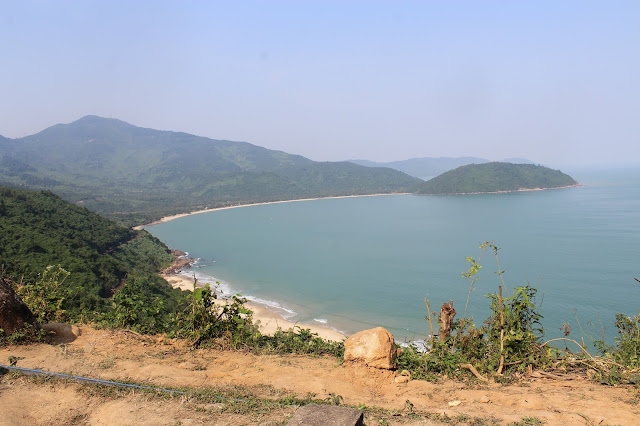In Italo Calvino's Invisible Cities, Marco Polo describes a series of imaginary cities to the busy Emperor Kublai Khan. Yes, Kublai Khan was very busy indeed, ruling an empire that covered approximately 20% of the world's inhabited area. Yet his incursions into southeast Asia were largely unsuccessful. Three times his armies were sent to invade Vietnam, and three times they were repelled. During two of those campaigns Phạm Ngũ Lão, a military commander in the Trần dynasty Royal Guard, was instrumental in defending Đại Việt against the foreign aggressor.
 |
| Phạm Ngũ Lão caught mid-bow, presumably not in front of Kublai Khan |
 |
| Marco Polo's family receiving a helping hand from Kublai Khan... or is it? |
My occasional perambulations about the city of Huế rarely take me down the street of Phạm Ngũ Lão: it is a good place to get a western meal, a passable cocktail and a late(ish) drink on other occasions, though not somewhere one feels the soul of the city is on display. This casual disdain for the apparently inauthentic is, of course, delusory: whatever one's misgivings about neocolonialism, it is ignorant to reject the importance of this street to the tourist industry and consequently the whole of Huế. Nonetheless, on one early evening, when I was still accompanied on my walks by my (missing, presumed consumed) dog, Huệ, I did happen to wander down the street of the great Trần Dynasty general.
"Hello teacher! came a cry from the outside the restaurant opposite. The source of the exclamation was not, as might have been inferred, one of my students, but a member of the waiting staff. I crossed the street to say hello, recognising him as someone I had played football with once or twice, before the rainy season ended the soccer season.
"How are you? I was wondering if you could teach me something."
I asked him what he wanted to know. He was already smirking.
"How to get a girlfriend."
I was halfway through my protest that this was something with which I would be unable to help him when I realised he was, of course, being ironic. In Vietnam an umarried thirty-five-year old teacher is not someone one would ordinarily approach for relationship advice.
"I'm JOKING! I need help with my English. What does..."
Muscle memory kicked in and I adopted an expression of sincere concern, listening carefully and expecting to be asked a straightforward question about uncountable nouns, though I prayed that I would not be interrogated about a complex grammatical point. Again, however, he surprised me;
"...what does 'life is a tale, told by an idiot' mean?"
Now it was my turn to smirk. I'd never studied Macbeth at school, but was familiar enough with the full quote to respond:
"Life's but a walking shadow, a poor player
That struts and frets his hour upon the stage
And then is heard no more: it is a tale
Told by an idiot, full of sound and fury,
Signifying nothing."
...and I went on for a little bit, talking about absurdity outside the context of Macbeth itself, but to reassure him that I knew of the quote's provenance:
"...and of course, it's from..."
"Macbeth," he said, completing my sentence, "I know what it means too- I was testing you!"
He smiled and petted Huệ.
"You have passed the test! Well done!"
Someone called him back to work, he said goodbye.
A tale told by an idiot. Maybe. The three act structure might not apply to anything offstage, and the narrative thread is want to meander, but where it leads us... wherever it leads us, humans will impose patterns and structure and character arcs. So it came to pass that my dog and I were spellbound for a moment or two, trying to tie the threads of Macbeth and Phạm Ngũ Lão together. Both men were famous generals who had successfully resisted conquering forces, both men were close to their king. Phạm Ngũ Lão was loyal, however, and his reward was a bride of noble status (well, the adopted daughter of Prince Trần Quốc Tuấn) and a lifetime of war ending in a peaceful death at the age of sixty six...
...and possibly thousands of streets across his homeland named in his honour.
-
This is part of an ongoing series of articles concerned with the origins of Vietnamese street names, and the myths and legends attached to them. You can find the story of how this project came to pass at Huế Street Names.
Alternatively, you can look up all articles labelled street names
-
This is part of an ongoing series of articles concerned with the origins of Vietnamese street names, and the myths and legends attached to them. You can find the story of how this project came to pass at Huế Street Names.
Alternatively, you can look up all articles labelled street names




























